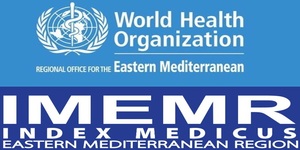Maternal Risk Factors Associated with Low Birth Weight in Ibn al-Baladi Hospital in Baghdad Governorate
DOI:
https://doi.org/10.36321/kjns.vi20191.2257Keywords:
low birth , weight, Factors, mother, BaghdadAbstract
Background: low birth weight is a reliable indicator in monitoring and evaluating the success of maternal and child health programs and has been defined as a birthweight less than 2500 grams.
Aims of study: to determine the mean birthweight of the studied sample and to identify factors associated with the low birth weight.
Methodology: A cross-sectional study conducted in Baghdad in Ibn Al-Baladi hospital. Sampling was convenient & sample size was 200. The study started from 1st October 2016 to 30th March 2017. Data was collected by questionnaire to obtain social- demographic information.
Results: The result shows that mean weight of cases was 2.09 kg as compared to 3.5kg in controls, and the 12% were illiterate. About (36.9%) of the women with low birthweight were mainly at less than 37 weeks of gestation age, the number of women who had more than one child was higher among LBW than among normal birthweight. Analysis of results by (chi-square test) show that low educational level, preterm, short birth space interval less than 2 years, and multigravida, and low ANC visits and smoking were significant factors associated with low birthweight
Conclusions: This study shows the low educational level, medical and obstetric and low visit antenatal clinic and smoking factors have strong association with low birth weight.
Recommendation: The study re commended that re gular health education program through mass media and regular education program in ANC units for pregnant women to avoiding LBW babies.
Downloads
Downloads
Published
How to Cite
Issue
Section
License
Copyright (c) 2019 Muna Abdul-Kadhum Zeidan

This work is licensed under a Creative Commons Attribution 4.0 International License.













